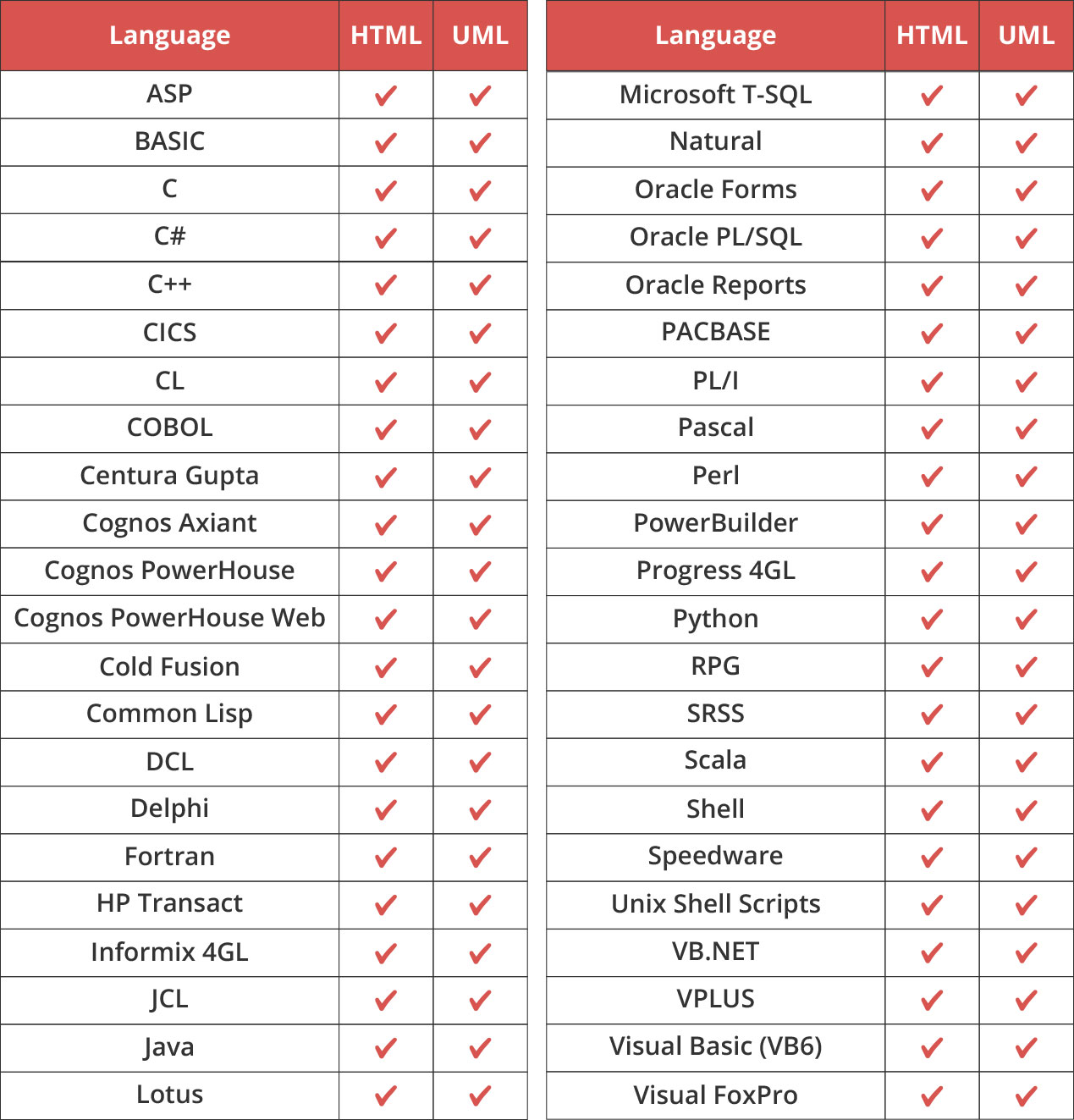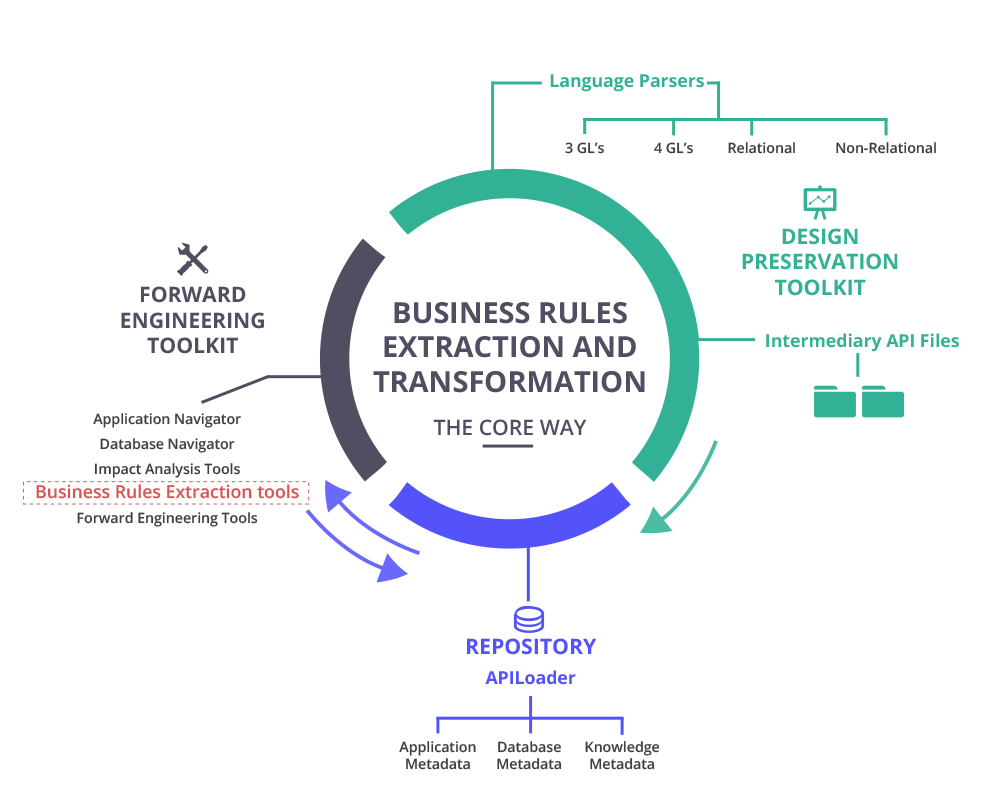WHAT ARE BUSINESS RULES?
Business rules are essentially the implementation of all the organizations policies, practices and specific rules that have been developed and modified over time to run your organization.
If you are like most organizations, these rules are buried deep in the specific technical languages used to build your organizations applications. The technical implementation of these critical rules make them inaccessible to all but the most skilled technical resources within your organization. These rules are rarely if ever documented outside the applications and are often not fully understood.
Business Rules can be thought of in the following broad categories:
WHY RECOVER BUSINESS RULES?
The business defines each rule, so the business should be able to understand each business rule, both new ones and existing ones that may have been implemented decades earlier.
A less than complete understanding of business rules will lead to poor systems and ongoing issues. When business analysts and programmers are tasked with implementing new programs with only a basic understanding of how the program impacts existing business rules and processes, the consequences can be adverse and severe.
Worse, what isn’t documented isn’t tested during implementation, setting the stage for discrepancies, new rounds of testing and extra costs. Documenting and understanding the rules that run your organization is the first basic step that must be taken before any of your processes can be changed and improved.
Simply put, it is virtually impossible to execute a program to improve your organization without first understanding what you have and how effective it is. Core’s solution gives you the ability to look at applications from a Business Rule perspective.
The view is critical as it provides a perspective that is independent of technical all languages, platforms, easy to read and understand and most importantly is reusable time and again by business minded resources, over time, for an organization.
Using CORE's business rules extraction tools provides immediate benefits including:
HOW CAN EXTRACTED BUSINESS RULES BE USED?
Business Analysts can use Extracted Business Rules to document existing application functionality for purposes of specifying changes to applications, specifying functionality in new applications, or for comparing existing functionality to software packages being considered for purchase.
DIRECT BENEFITS TO THE BUSINESS AND THE INFORMATION TECHNOLOGY GROUP
Here are a few direct Information Technology Group benefits associated with a structured approach to business rules management in software code:
To help Business Analysts understand and work with the system;
To communicate system functionality to Business users and management;
To help existing and new programmers understand (and find) existing functionality;
To increase programmer productivity by enabling code reuse;
To feed the process of reengineering and migration process with design documentation;
To help evaluate the suitability of packaged software replacements;
A good Business Rule tool enables the business analyst to add comments to business rules to further explain their purpose or use;
A tool should also enable the business analyst to perform cross reference and drill-down activities interactively, as needed.
The tool should also translate the extracted functionality into some form of structured English or pseudo-code, and allow it to be exported to office applications for further development.
Core’s solution provides all these features to business analysts, programmers and Information Technology managers.
Information Technology organizations are now moving to implement business logic through the use of Business Rule Management Systems. Such systems are more portable, durable, accessible and easier to maintain. An excellent beginning is to use Core’s tools and methodology to recover your business rules from your systems; clean them up by identifying and refactoring duplicate, obsolete or inconsistent rules; and build a simple working repository of business rules that business analysts, Business users and programmers can use as the basis for all future development.
HOW DOES CORE EXTRACT BUSINESS RULES?
The traditional means of extracting business rules has been for business analysts to sit down with programmers and walk through the code, often driven by existing documentation into which the business rules are mapped. This approach is typically time consuming, expensive, and often inconsistent and error prone.
The CORE approach involves the use of tools specifically designed for the task of the extraction and display of the underlying business rules including UML and HTML. These tools offer new opportunities due to the ease and speed with which business rules can be extracted. These tools can typically allow you to extract business rules with just a few simple clicks in a very short time frame, in a repeatable and consistent manner.
UML OBJECTS SUPPORTED
| UML Object Type | |
|---|---|
| Activity Diagram | |
| Class Diagram | |
| Collaboration Diagram | |
| Component Diagram | |
| Deployment Diagram | |
| Object Diagram | |
| Sequence Diagram | |
| State Chart Diagram | |
| Use Case Diagram |
SOFTWARE LANGUAGES SUPPORTED
The CORE Migration workbench provides a consistent and structured environment in which to migrate these legacy platforms and the associated data structures and databases to modern computing platforms.
All migration solutions include the migration of the data and data structures of the application to leading-edge Relational Database Management System (RDBMS) including Microsoft SQL Server, Oracle, DB2 and Eloquence, to name a few.
Most important, we guarantee our work, provide a 60 day warranty period and all projects are performed on a fixed price, fixed timeline basis.
CORE Migration is the proven method for moving legacy applications to modern computing platforms. All CORE Migration solutions combine extensive experience with a rigorous set of procedures, precision-engineered software tools and an experienced team of dedicated professionals to accelerate the migration of legacy 4GL platforms.
Languages Supported

Databases Supported
















